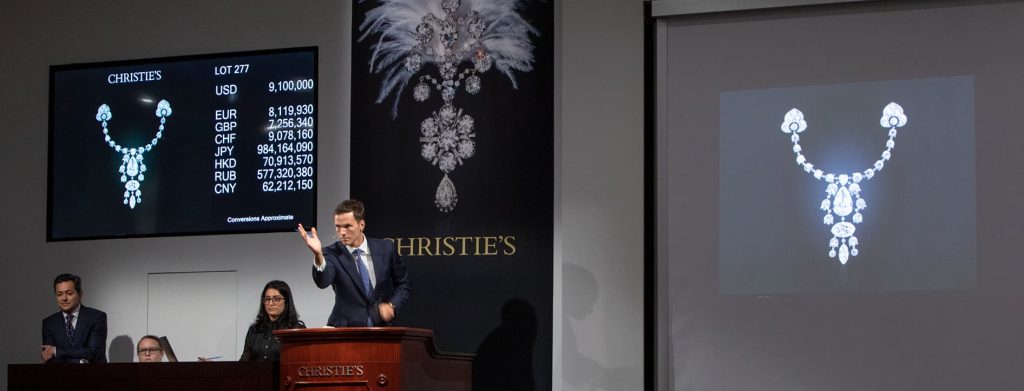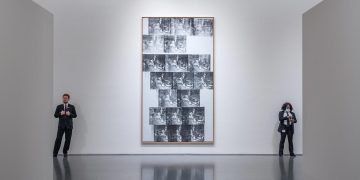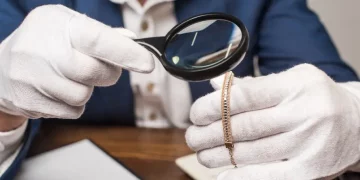The world of collectibles, especially rare art, antiques, and luxury items, is a unique and intriguing marketplace. Auction houses and collectors alike are highly invested in their knowledge, techniques, and strategies to succeed in this competitive arena. Yet, there are certain secrets—insider strategies—that are kept behind closed doors, away from public discourse and official resources. For those with the right knowledge and discretion, these strategies can lead to incredible financial success. However, they are typically not part of the standard auction houses’ teachings. These unspoken tactics, often banned or discouraged, could be the difference between a successful collection and a failed investment.
In this guide, we will uncover the forbidden strategies that auction houses prefer to keep hidden, explaining why these practices are suppressed and the ethical considerations surrounding them. By exploring the dynamics of how auction houses operate, we will reveal how and why certain collectors and investors access information and use strategies that could either maximize profits or raise significant ethical questions. While these strategies are not openly discussed in mainstream auction catalogs or by seasoned experts, they are crucial to understanding the complex nature of the collecting world.
Why Auction Houses Keep These Secrets
Auction houses are the gatekeepers of the collecting world. They control the flow of valuable items, ensuring that only the right individuals—those who can afford the items or meet their criteria—gain access to the market. However, auction houses are also businesses, and like any business, their primary objective is to maximize profits. This leads to a certain level of control over what is made public and what is kept confidential.
One of the reasons auction houses suppress certain information is to maintain control over the pricing of items. If certain strategies or insider tips were widely known, it could destabilize the market, leading to unfair competition or unpredictable pricing. In addition, auction houses want to maintain the illusion of fairness, where every bidder has equal access to information, ensuring a “level playing field.” The concept of insider knowledge can be threatening to this image, as it challenges the idea that the highest bid wins purely based on merit.
Moreover, some of these strategies revolve around manipulating the psychological and financial behaviors of both sellers and buyers. These tactics, while legal in some cases, may be perceived as unethical by the broader community. Auction houses often distance themselves from such practices to avoid alienating clients or damaging their reputations.
Insider Strategies Banned from Official Resources
1. Shill Bidding
One of the most controversial and often prohibited strategies in the auction world is shill bidding. Shill bidding occurs when a person—often an accomplice—artificially inflates the price of an item by placing fake bids. This tactic creates the illusion of higher demand, leading other bidders to believe that an item is worth more than it truly is.
Auction houses have strict rules against shill bidding, as it directly undermines the integrity of the auction process. However, in certain cases, some unscrupulous sellers or even auction house staff may engage in this practice to drive up prices. For those in the know, recognizing patterns of shill bidding—such as bidding behavior that seems out of sync with the general flow of the auction—can help savvy buyers avoid overpaying for items.
While shill bidding is illegal in many jurisdictions, there are subtle ways in which the practice can still be indirectly encouraged. For example, an auction house might have “reserve prices” that they won’t reveal, which leads to auction prices consistently hitting a certain floor, even when no one else is bidding. Although the auction house may not technically be engaging in shill bidding, they may be guiding the price to achieve a pre-determined result.
2. Hidden Reserves and Private Deals
Another secret tactic used in high-end auctions involves hidden reserves—minimum bid prices that sellers or auction houses set behind the scenes. While public auctions are often thought to operate on the principle that the highest bidder wins, the hidden reserve price can sometimes be set much higher than the starting bid. If the auction does not reach this price, the item may simply not be sold, or a private deal can be struck afterward, with the auction house acting as a mediator.
Auction houses tend to keep the reserve price private to prevent bidding from starting too high, which could scare away potential bidders. For buyers, recognizing the potential existence of hidden reserves can be crucial to understanding the true value of an auction item. If an item consistently doesn’t meet expectations during bidding, it’s worth considering whether there’s an underlying secret deal at play.
In some rare cases, auction houses may also allow private deals to take place behind closed doors. This can occur if an item is passed over in the auction, or if a seller and buyer agree to settle the transaction outside of the auction itself, usually for a higher price than originally bid. While these practices are generally frowned upon, they exist in the gray area of auction transactions.
3. Buyer’s Premium Manipulation
Most auction houses charge a buyer’s premium—a percentage added to the hammer price of the item that is paid to the house itself. The buyer’s premium can range from 5% to 20%, depending on the auction house and the item being sold. However, some auction houses use strategic methods to manipulate the buyer’s premium in subtle ways.
For example, certain auction houses may waive or reduce the buyer’s premium for high-profile clients or those who bid on certain categories of items. This can create an unfair advantage for these collectors, as they are effectively paying a lower overall price for a rare collectible. Other times, auction houses may bump up the premium for items that are less in demand, thus discouraging bidding on those lots.
For collectors, understanding how the buyer’s premium functions at different houses can help them gauge the true cost of an item, as it significantly affects the final sale price. Avoiding auctions with inflated premiums or seeking auctions that offer lower or negotiable premiums can be key to securing better deals.

4. Strategic Lot Grouping and De-grouping
Auction houses have significant control over how lots (or groups of items) are grouped together for sale. Sometimes, auctioneers will deliberately bundle lesser items with high-value pieces in order to generate higher bids. Conversely, they may de-group valuable collections to sell items individually, thus maximizing profits for items that might otherwise not attract enough attention.
This strategy works because it appeals to the psychology of bidding. When bidders see a high-profile piece, they may bid more aggressively on surrounding lots, even if the surrounding items are less valuable. Alternatively, breaking up valuable collections can create bidding wars for individual pieces. This tactic often benefits the auction house, as the final price ends up higher than it would have been if the items had been sold together.
For collectors, recognizing when auction houses are employing this strategy is essential. If a collector is interested in a specific piece, they should pay close attention to whether it’s part of a high-profile grouping or if it stands out as an individual lot that could fetch a much higher price when de-grouped.
5. Bid Rigging and Collusion
In the world of high-end auction houses, there are occasionally whispers of collusion between bidders. This is often referred to as “bid rigging,” where several parties agree beforehand to place bids at certain levels to ensure that the price doesn’t go higher than a certain point. In these situations, the outcome of the auction is predetermined, and bidders collude to ensure that the final winning bid is either agreed upon or within a range that benefits all parties involved.
While this practice is illegal and extremely risky for those involved, it does happen in rare cases. As such, collectors should always be cautious when participating in smaller or private auctions, where such collusion is more likely to go unnoticed. In major public auctions, large bidding wars often discourage collusion, but in smaller settings, awareness of this tactic is vital.
Why Auction Houses Suppress These Strategies
The main reason auction houses suppress the knowledge of these insider strategies is simple: transparency is vital for maintaining the trust of their clientele. Auction houses rely on their reputation and the perception of fairness to attract both buyers and sellers. If these strategies were widely known, it could undermine the public’s confidence in the auction process, leading to a decline in participation, financial instability, and legal challenges.
Additionally, revealing these insider practices could lead to legal consequences, as some of these tactics (like shill bidding and collusion) are illegal and subject to fines or penalties. Auction houses, therefore, have a vested interest in ensuring that these practices remain in the shadows, as it shields them from potential lawsuits and regulatory scrutiny.
Furthermore, suppressing this information ensures that auction houses retain their power over the market. If buyers and sellers were fully aware of all the tactics and manipulations involved, it might level the playing field too much, making it more difficult for the auction houses to maintain their role as the primary intermediaries between collectors and valuable items.
Conclusion: A New Era for Collectors?
As collectors become more aware of the hidden strategies employed by auction houses, there is an opportunity for a shift in the market. Knowledge is power, and those who understand the tactics and nuances of the auction world will have a competitive edge. By becoming familiar with the suppressed strategies discussed in this article, collectors can arm themselves with the tools needed to navigate this secretive world more effectively.
While these insider tactics are not likely to be taught in any official resources or standard auction guides, they represent the unspoken realities of the high-stakes world of rare collectibles. By uncovering these practices, we hope to shed light on the hidden mechanisms that drive the auction market and help collectors make more informed decisions in their pursuit of rare treasures.

















































